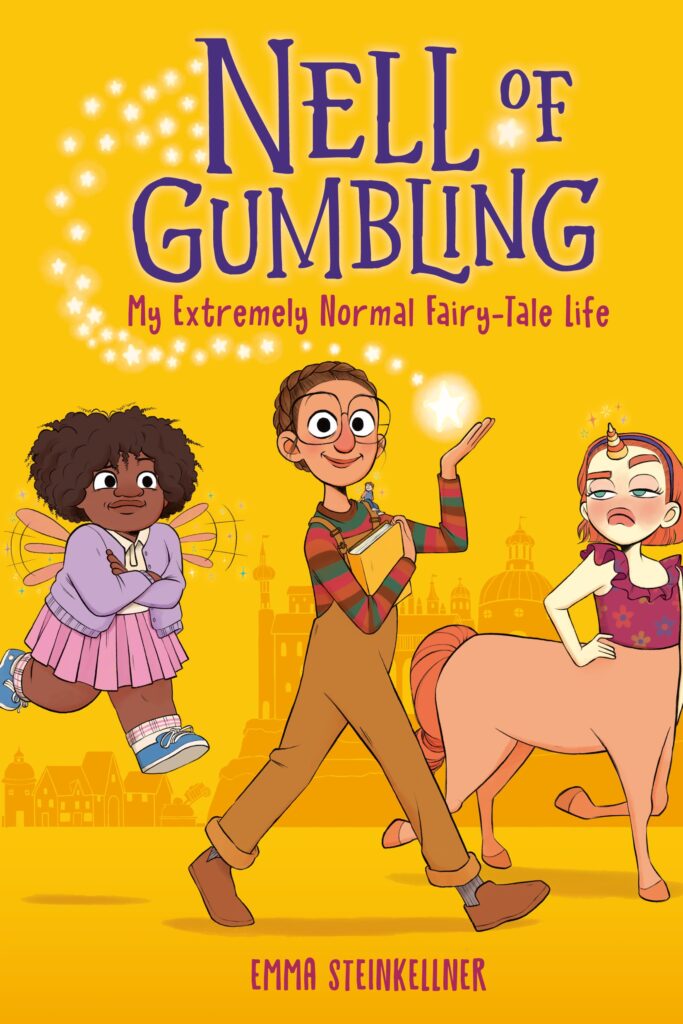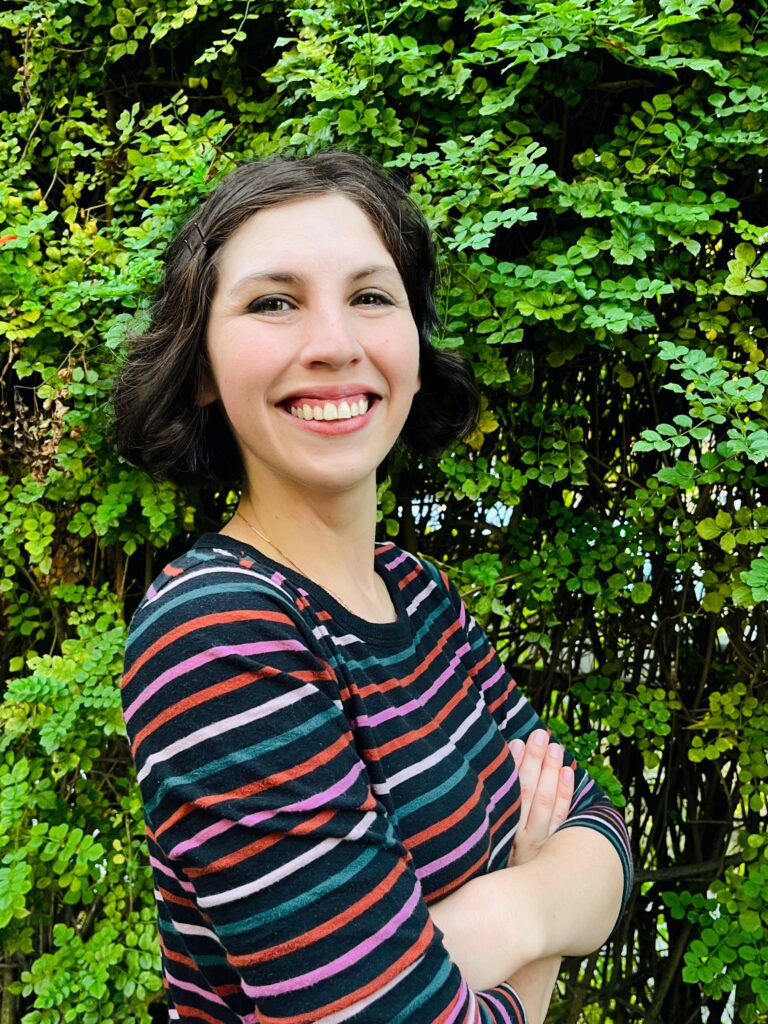What Makes a Story a Fairy Tale? A guest post by Emma Steinkellner

We all know what a fairy tale is, right? I mean, we know what they feel like; we know the vibe of a fairy tale. I feel like I’ve known since I was a little kid. But when I decided to write and illustrate a new book set in a fairy tale–ish land with unique historical events and folklore, I had to think about it a lot more. And what I learned is . . . well, it’s kind of hard to pin down what truly makes a story a fairy tale.
I’ve always been fascinated by fairy tales, and my mom encouraged me to read them a little closer. We used to check out different versions of “Cinderella” from the library, read them together, and try to figure out what made them similar and different (my favorites were Cindy-Ellen: A Wild Western Cinderella and Mufaro’s Beautiful Daughters). And my exploration didn’t stop with “Cinderella.” I read any fairy tale I could get my hands on. There are plenty, from all over the world and throughout history.
ADVERTISEMENT
ADVERTISEMENT
The playful or critical takes on this genre are known as “fractured fairy tales,” and there are stories that take place in a universe composed of fairy tales and characters we all recognize, using that opportunity to comment on the classics. See: the SCU (Shrek Cinematic Universe), Ever After High, the Land of Stories books, and the musical Into the Woods. While I love a lot of fractured fairy tales, I knew this wasn’t exactly what I wanted to do with my book. I wanted to free my imagination as I created an original magical land with its own history of fairy tales never seen before.
There’s so much about this world that would be extraordinary to us—fairies, unicorns, people no bigger than your thumb. But I thought this world, as fantastical as it is, should feel grounded and lived-in for these characters. And I wanted to introduce the reader to this world through Nell Starkeeper, a kid who is less than enthusiastic about her apprenticeship as a Lorekeeper down in the castle dungeon, where she researches dusty old tales from Gumbling history. But as Nell begins to find the fun in her job, she gains a new appreciation for these stories and wants to engage with them in her own way, by writing and illustrating them as comics. I liked juxtaposing real problems a kid might have—disappointment, conflicts with friends, struggles with responsibility—with fairy tale elements like castles and wishes. They go together more than you might think.
Morphology, or folkloristics, is the academic discipline focused on fairy tales. I think it’s fascinating, but truthfully? Much like an enchanted forest, it’s thick and tangly, there’s a lot of ground to cover, and I get lost easily. There are fairy tales from all periods of history, all over the globe, some with identified authors and some with mysterious origins. Some experts have organized them by their common elements and motifs, and some have organized them by the purpose of the tales. I don’t think I’d make a very good folklorist, but I wanted to try to think like one as I wrote my original fairy tales.
So I thought about very basic stories that have been told across time and culture. For example: a character outwits the personification of doom or death. That same simple plot is expressed in the otherwise very different stories of Hershel of Ostropol, Rumpelstiltskin, and Anansi the Spider, to name a few examples. So I wrote an original story for Nell of Gumbling, called “The King and the Commoner,” that explored that same essential concept. I did that with each of the tales Nell illustrates in her lorekeeping. All of them have a core theme that ties to a group of other tales or myths, but they also tie to the history and current events in Nell’s hometown. In that way, even if Nell isn’t neighbors with Little Red Riding Hood and Sleeping Beauty, she is linked to a whole universe of fairy tales and folklore.
What makes a story a fairy tale? Does it need to be a faithful adaptation or a self-aware take on a famous story that is universally agreed-upon as a “fairy tale.” Does it need to impart a value or teach a lesson? Does it have to involve magic or wishes or literal fairies? Does it need to begin with “once upon a time” and end with “happily ever after”?
ADVERTISEMENT
ADVERTISEMENT
There might not be one answer, and that’s okay! I think fairy tales are about the questions and the exploration. The more you read or watch or hear, the more inspired you might be to create original tales, and the exploration should open up the way you think, not limit it. So be open to exploring the wide world and history of these stories, and let that open up your imagination.
Meet the author

Emma Steinkellner is a writer, illustrator, and cartoonist based in Los Angeles. She is the author and illustrator of the Okay Witch series of middle-grade graphic novels and the new graphic novel/diary Nell of Gumbling: My Extremely Normal Fairy Tale Life. She is also the illustrator of the Eisner-nominated comic series Quince.
Website: www.emmasteinkellner.com Instagram: @emsteinkellner
About Nell of Gumbling: My Extremely Normal Fairy-Tale Life
Raina Telgemeir meets the Land of Stories in this charming graphic novel-diary hybrid about a twelve-year-old girl and her perfectly average magical life.
To everyone else, the Magical Land of Gumbling is something out of fairy tales. But to Nell Starkeeper, it’s just home. Sure, the town community center might be a castle, her dads run a star farm, and her best friend Myra is a fairy, but Nell is much more interested in finding out if she’ll get the seventh grade apprenticeship of her dreams with world-famous artist Wiz Bravo.
She’s pretty sure her entire life has been RUINED when she’s instead matched with boring old Mrs. Birdneck in the town archives. And of course her perfect rival Leabelle gets to work with Wiz, and mean girl Viola won’t let Nell forget it. Meanwhile, suddenly Myra seems more into hanging out with Leabelle and saving the town from some weird strangers who keep talking about turning Gumbling into a fancy resort than being friends with Nell anymore. Can Nell find a way to save everything that makes her world magical, while figuring out where she belongs in it?
ISBN-13: 9780593570692
Publisher: Random House Children’s Books
Publication date: 09/26/2023
Series: Nell of Gumbling #1
Age Range: 8 – 12 Years
Filed under: Guest Post
About Amanda MacGregor
Amanda MacGregor works in an elementary library, loves dogs, and can be found on Twitter @CiteSomething.
ADVERTISEMENT
ADVERTISEMENT
SLJ Blog Network
Name That LEGO Book Cover! (#53)
Review of the Day: Being Home by Traci Sorell, ill. Michaela Goade
Exclusive: Vol. 2 of The Weirn Books Is Coming in October | News
Fighting Public School Book Bans with the Civil Rights Act
ADVERTISEMENT







